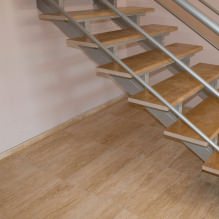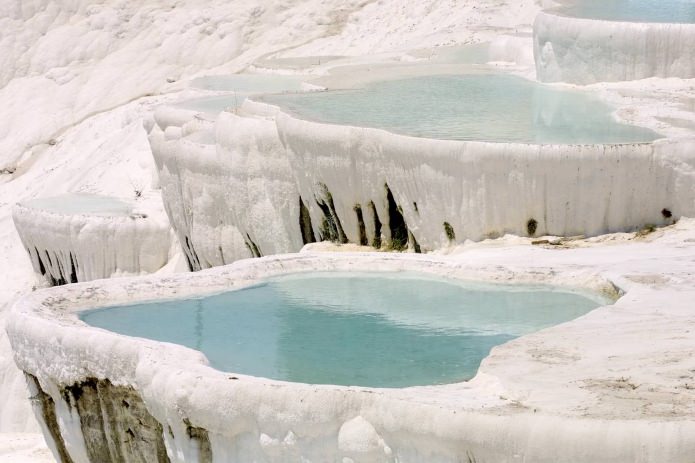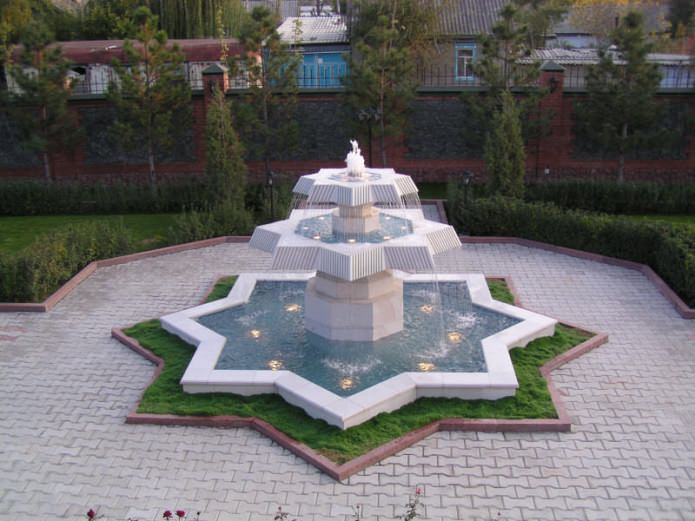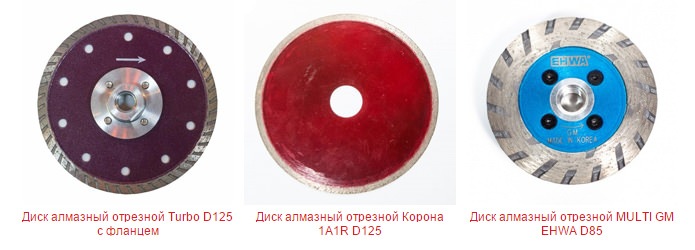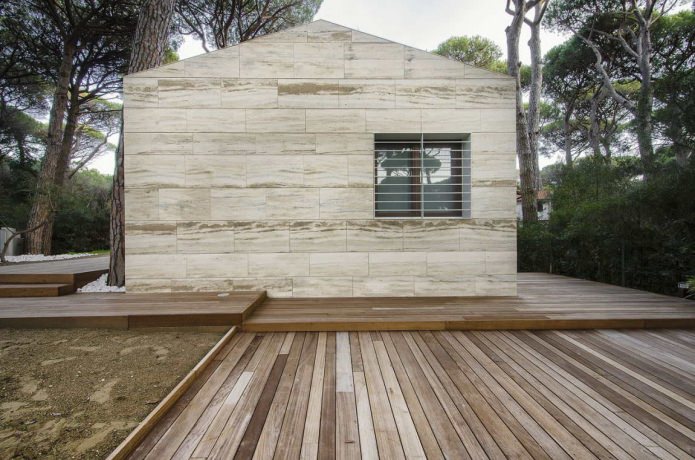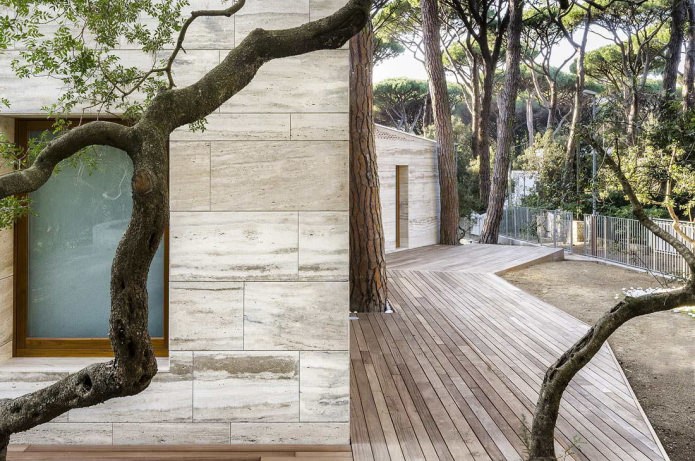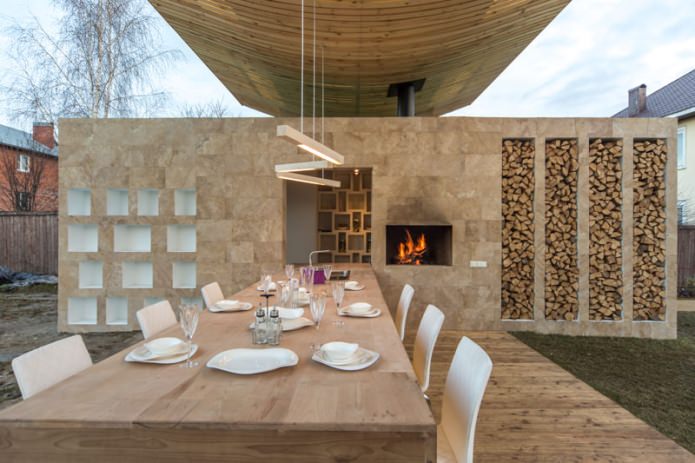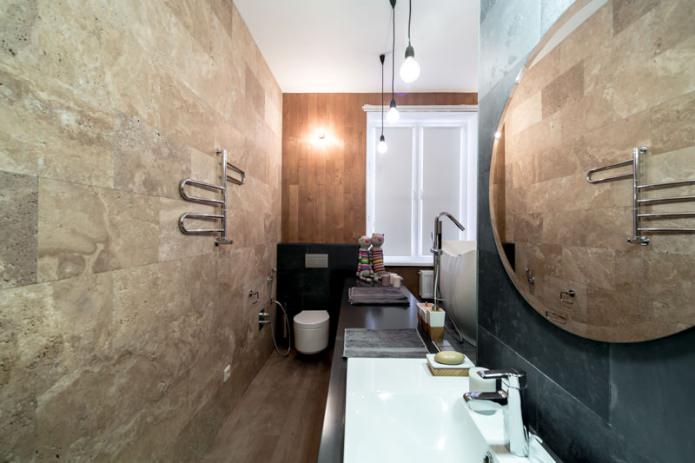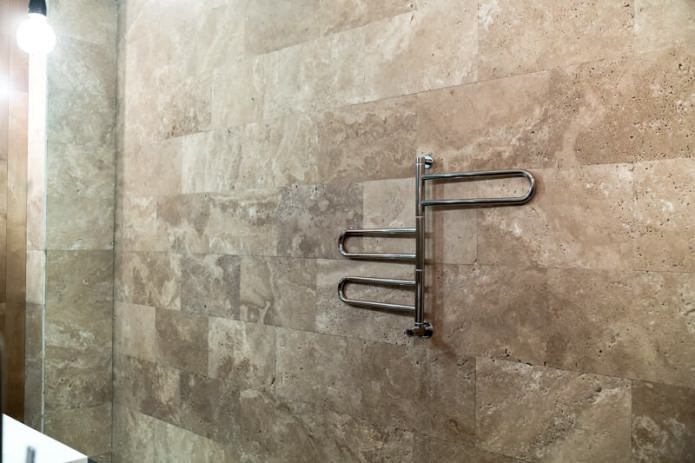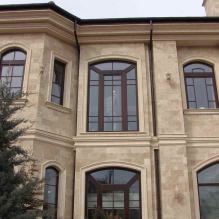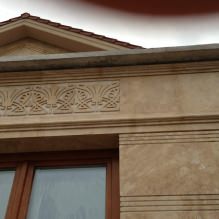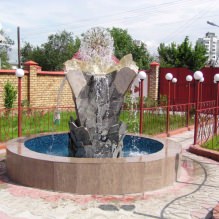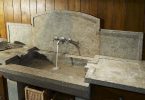Travertine finishes are popular in much the same way as marble finishes. Travertine (another name for the stone is calcareous tuff) is a natural material that has the same origin as marble. Limestone, which has lain in the rock mass for 50 to 300 thousand years, turns under the influence of pressure and time into travertine, and then, after a few more thousand years, into marble..
Travertine stone has the properties of both limestone and marble. It is very decorative and weather resistant. Hard enough to resist mechanical damage and soft enough to handle comfortably.
There are quite a few travertine deposits in the world, and one of the most famous is in Turkey, Pamukkale. This place is loved by tourists for the extraordinary beauty of white travertine terraces with bowls of natural reservoirs.
Due to the variety of colors and shades of this mineral – from white and dark brown to red and burgundy, travertine cladding can be applied in any style direction of design. At the same time, the shades of each stone plate are unique, and allow you to create a truly original, exclusive interior.
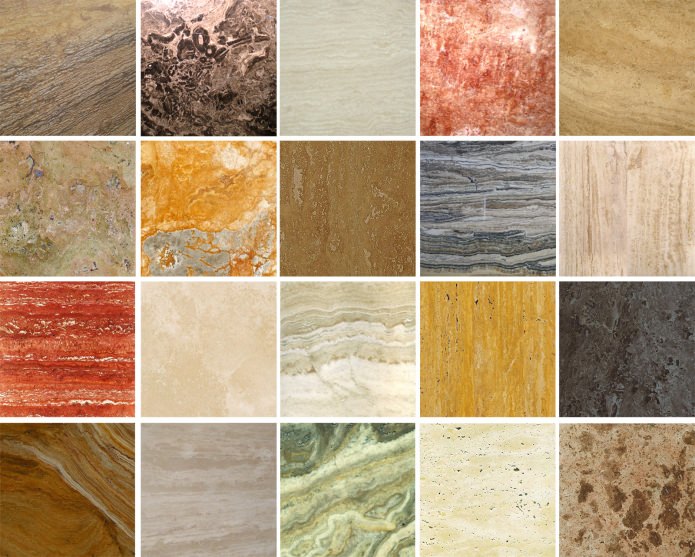
Finishing with travertine outside will give the house fire resistance – this stone does not burn. And it is also resistant to atmospheric precipitation, does not rust, does not rot. Moreover, its weight is less than the weight of marble, due to its porosity and lower density. The same qualities increase its thermal insulation properties. Travertine also conducts less sound than marble.
Travertine stone is resistant to negative temperatures, it can be used for exterior decoration of houses where winter frosts are common. To make the stone waterproof, it is additionally treated with a special solution. After that, it can be used not only for exterior decoration, but also for landscape design..
Quite often travertine is used to cover floors – it is resistant to abrasion, and is even suitable for creating paths, pavements, embankments.
For cladding with travertine, it must be processed, and this can be done even with a conventional circular saw with a diamond disc. As a result, individual parts can be manufactured with high precision, maintaining the desired dimensions with close tolerances. Travertine tiles can be laid in such a way that there are no seams – its edges will neatly come together without leaving a small gap.
In installation, travertine tiles are no more difficult than ordinary ceramic tiles: you only need to clean and level the surface.
There are three main areas of application for travertine stone:
- Construction Materials,
- Decoration Materials,
- soil leaching.
External finishing
Travertine is easy to work with and fairly easy to grind and polish. Sanded and polished travertine is used in construction for external cladding of facades. Travertine blocks are used as building material. Quite often, travertine finishing complements finishing from other materials..
Railings and balusters, columns and moldings for decorating portals of windows and doors, as well as many other architectural elements of buildings are made of travertine massif.
Interior decoration
Indoors, travertine cladding of walls and floors is used, sinks and even bathtubs are cut out of it, window sills, stairs, countertops, work surfaces, bar counters, as well as various decorative elements of interiors are made.
Polished travertine has one very useful property that distinguishes it from marble: it is not slippery. Therefore, quite often they decorate the bathroom premises..
Agriculture
When travertine is processed, nothing is lost: small pieces and crumbs go to grinding, and then the crushed stone is introduced into acidified soils. Due to its alkaline properties, limestone reduces soil acidity, which promotes plant growth.
